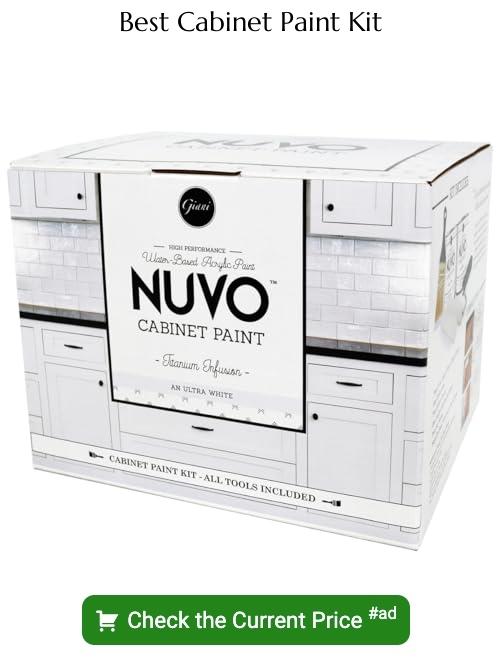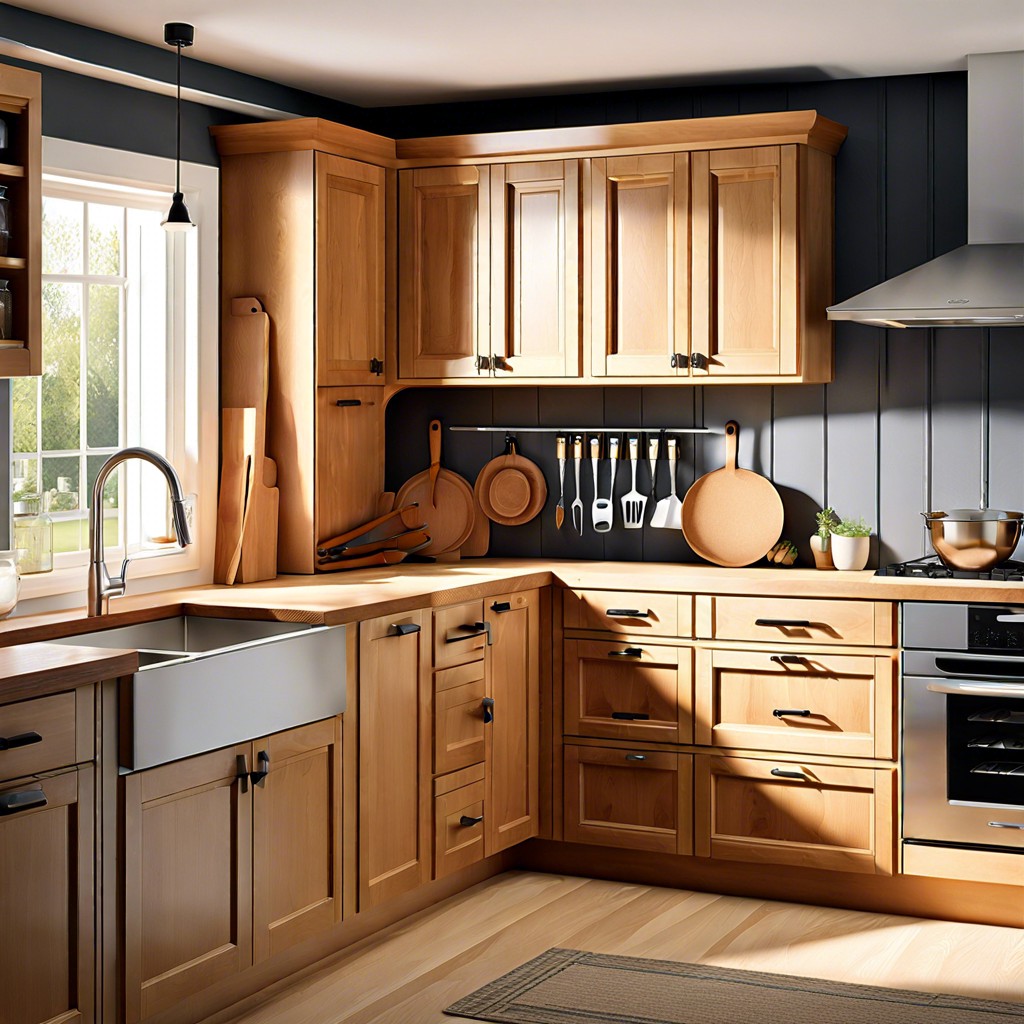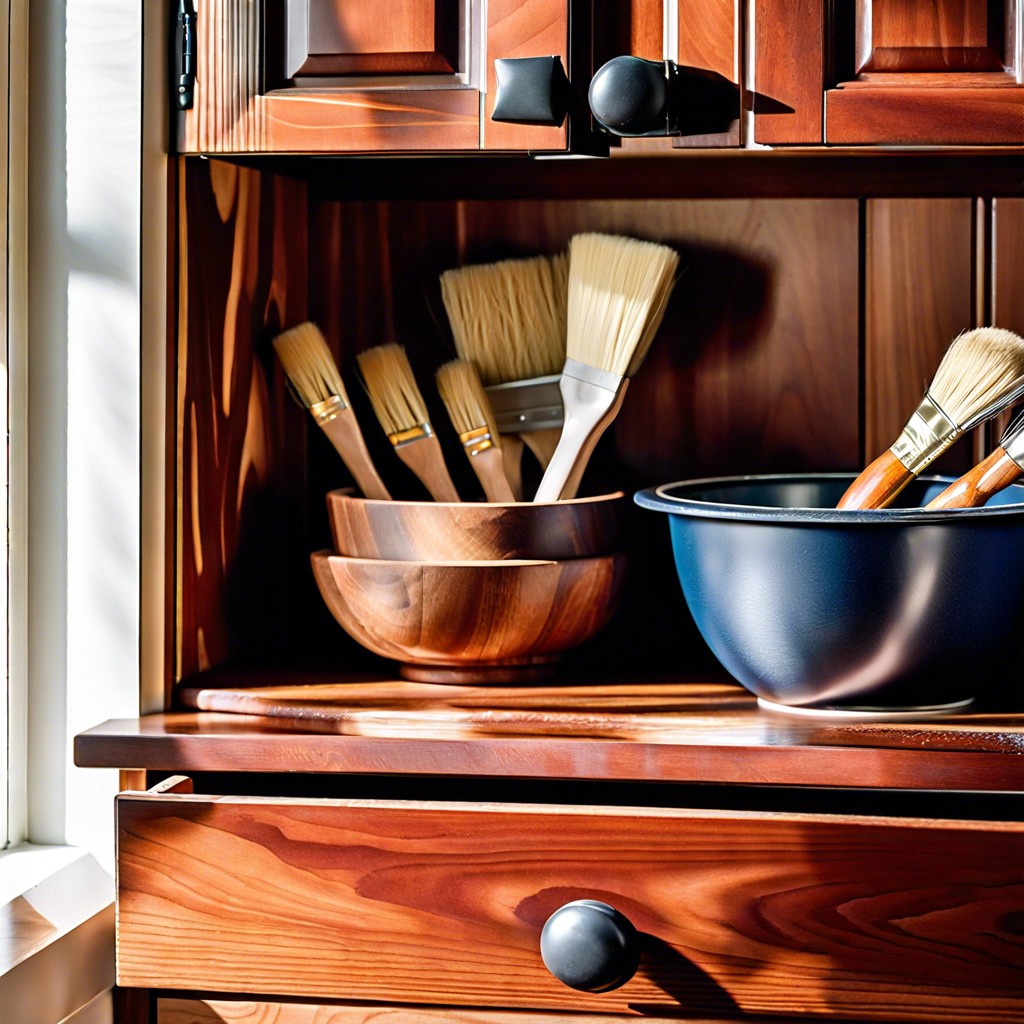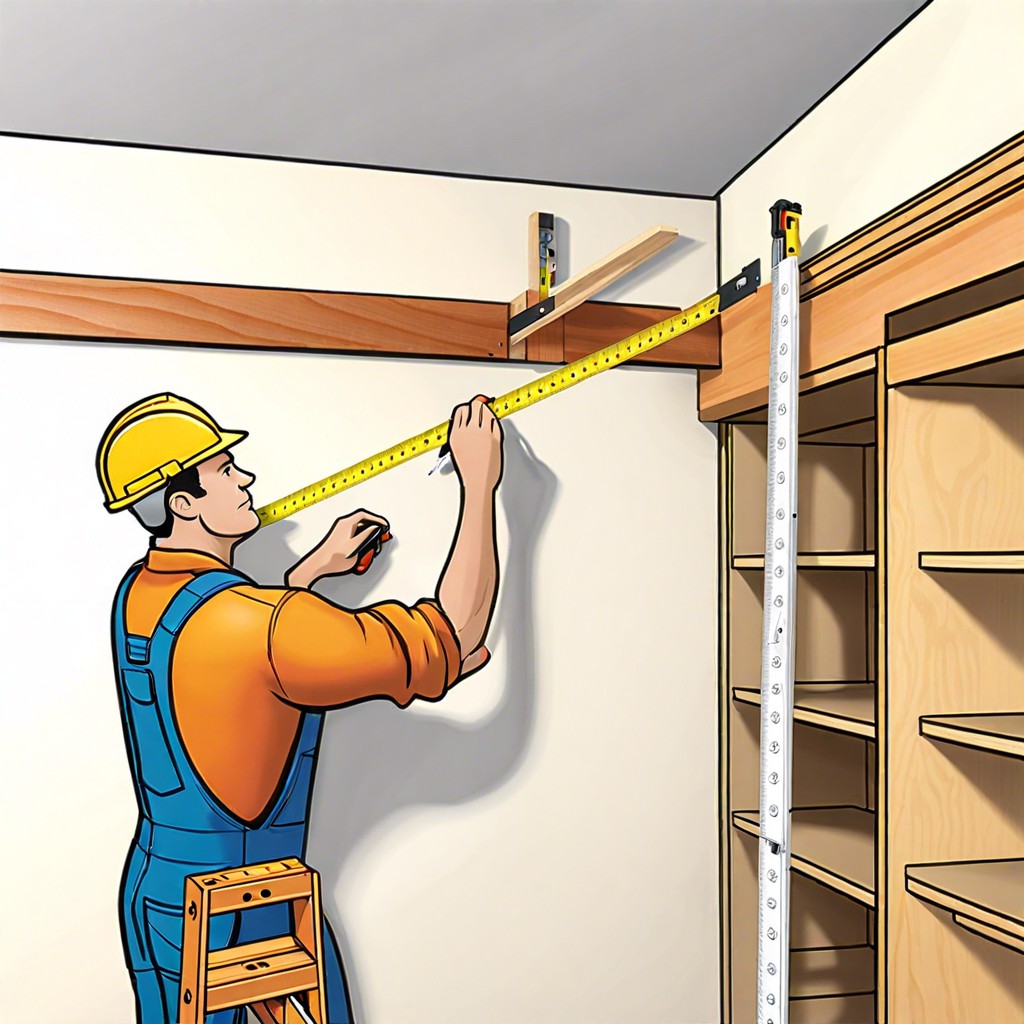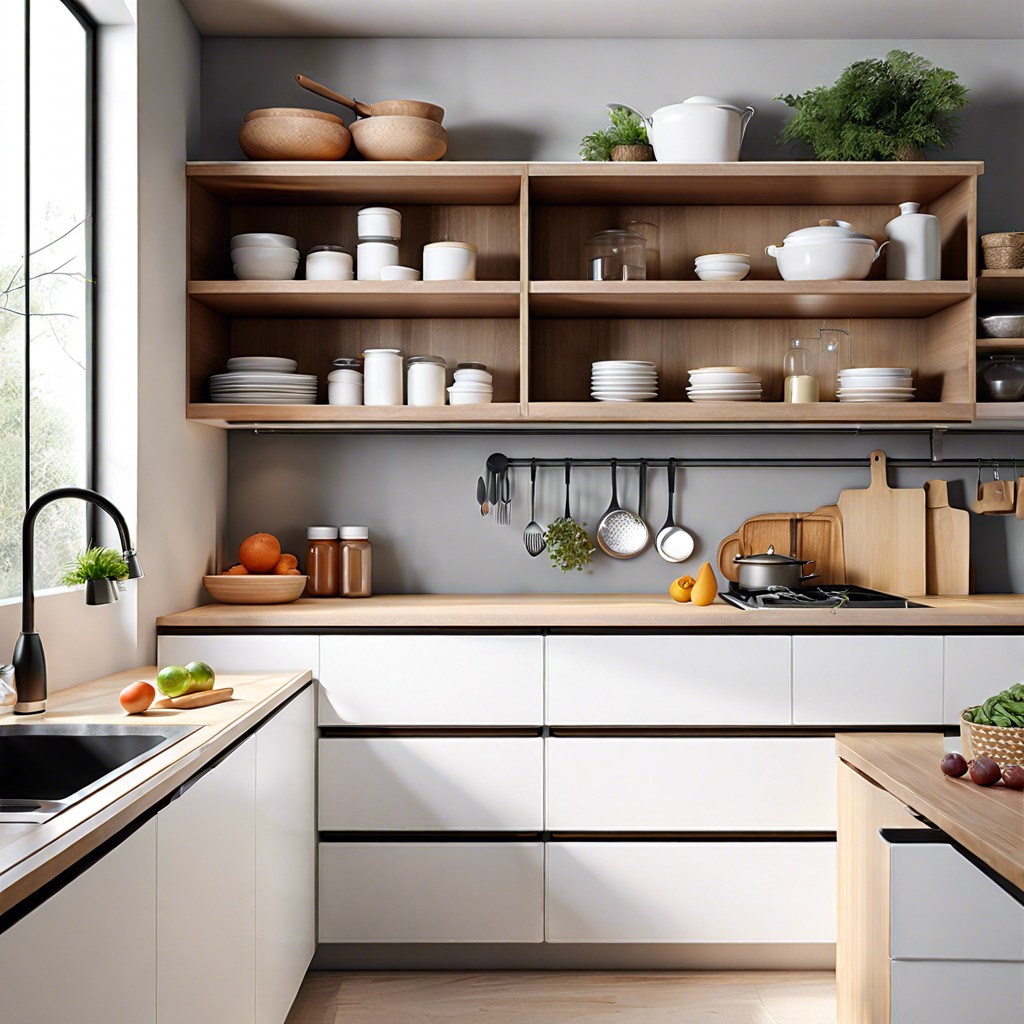Last updated on
Because your kitchen’s aesthetic depends heavily on the choice between satin and semi-gloss cabinets, understanding their unique characteristics can make a dramatic difference in your design process.
Key takeaways:
- Satin finish: hides imperfections, easier to clean
- Satin finish: scratches can be more noticeable, tricky to blend touch-ups
- Semi-gloss paint: enhances colors, durable, easy to clean
- Semi-gloss paint: shows imperfections, more susceptible to smudges
- Semi-gloss paint: better moisture and scratch resistance
What's Inside
Satin Finish Advantages
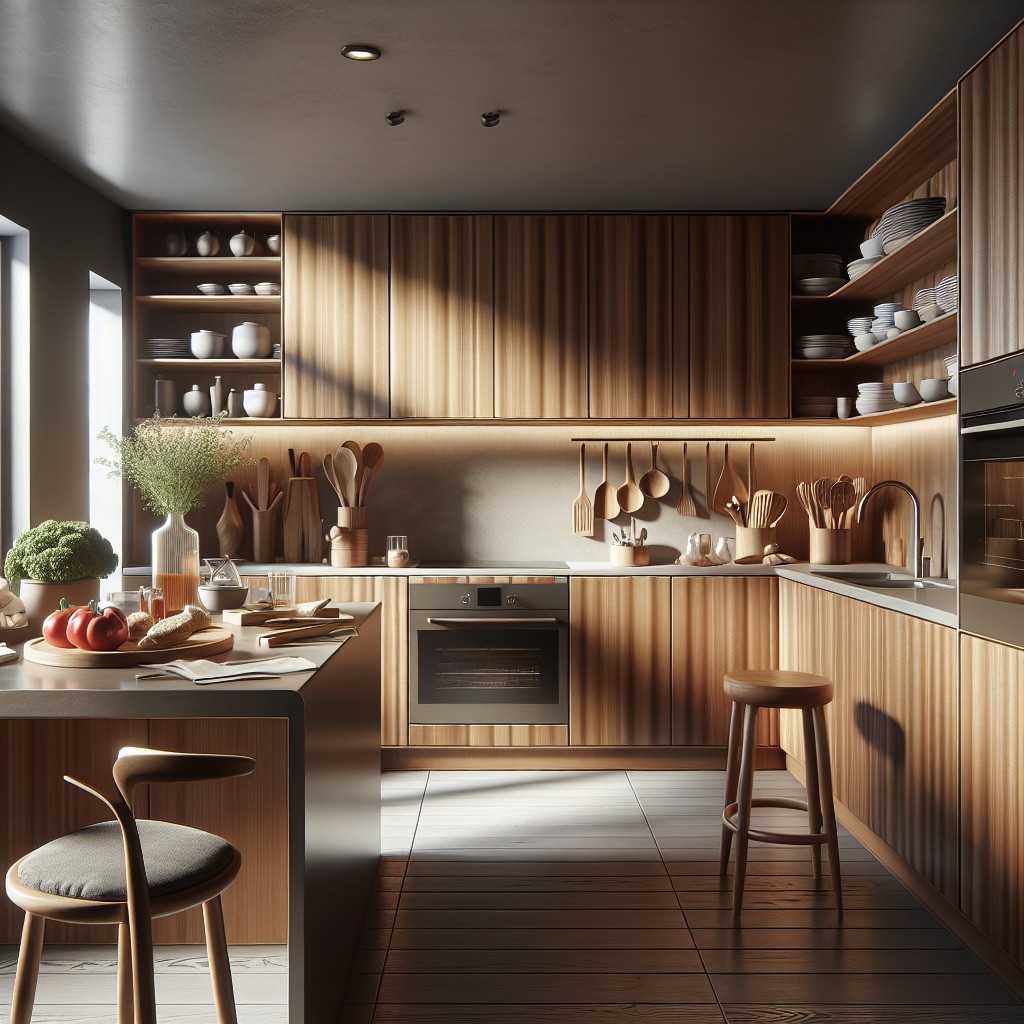
With a subtle sheen, satin finish cabinets convey a sense of warmth and depth, bringing an understated elegance to your space. This finish excels in hiding imperfections such as fingerprints and minor scratches, making it a practical choice for busy households.
It’s particularly beneficial in kitchens with less than perfect walls since the low reflectivity masks blemishes with greater effectiveness than its glossier counterparts. Additionally, satin surfaces are less likely to highlight brush strokes, enabling a more forgiving application process—ideal for those considering a DIY cabinet painting project.
Equally important, the finish offers good cleaning capabilities without demanding the meticulous care that glossier finishes often require, providing a balance between aesthetics and functionality.
Satin Finish Disadvantages
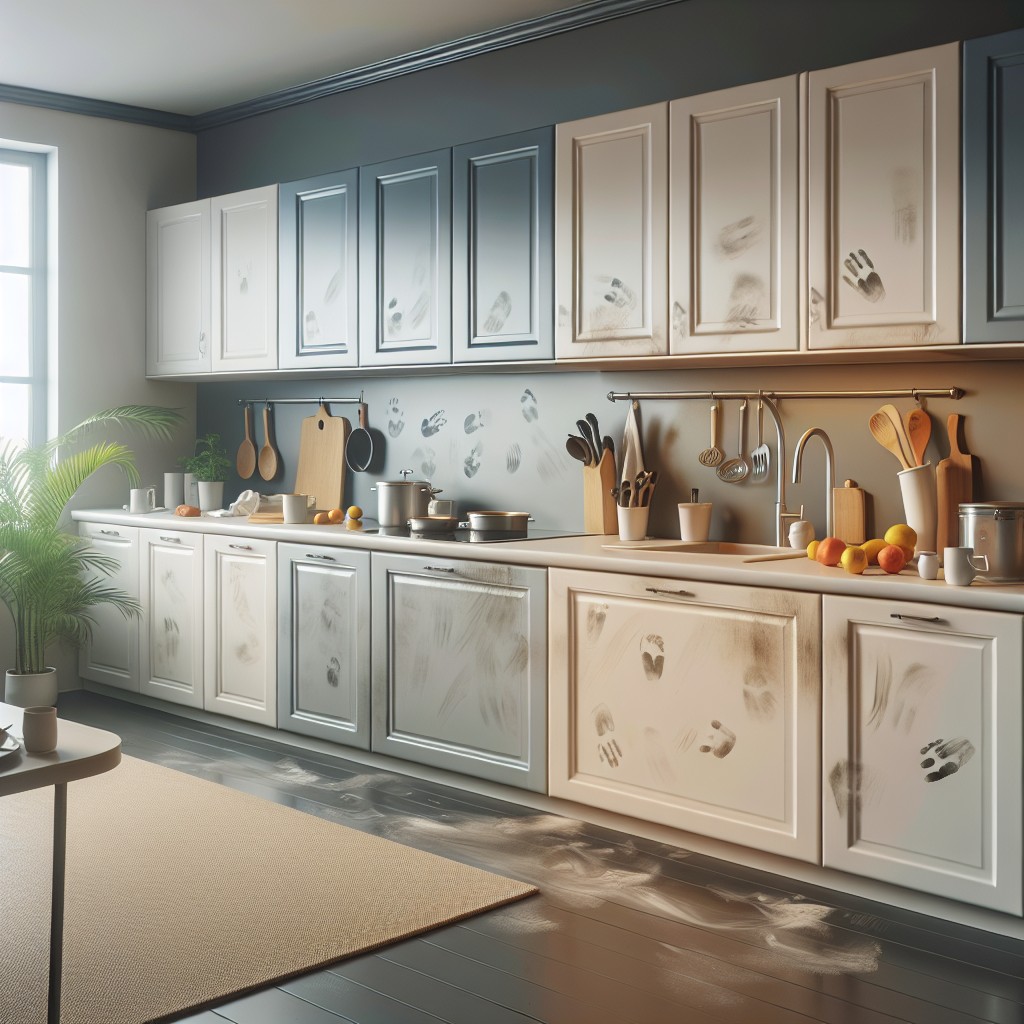
While satin finish cabinets bring warmth and elegance to a room, they do have a few drawbacks. Due to their lower sheen level, scratches, and imperfections can be more noticeable, more so if you opt for darker colors.
Cleaning can be slightly more challenging, as satin finishes sometimes don’t release dirt as easily as higher gloss finishes. These surfaces may require a bit more elbow grease or specialized products to achieve a streak-free look.
Additionally, touch-ups can be trickier to blend seamlessly with the rest of the cabinetry, as the sheen can reflect light differently even when using the same color. In rooms with high traffic or where cabinets are frequently used, this could mean more frequent maintenance to keep them looking their best.
Semi-Gloss Paint Advantages
Semi-gloss paint offers a radiant sheen that not only enhances the vibrancy of the colors on your cabinets but also offers a certain level of sophistication and depth to the overall aesthetic. This higher gloss level does wonders for smaller spaces, reflecting light to make areas appear larger than they are.
Plus, in the hustle and bustle of kitchen life, durability is key. Semi-gloss surfaces stand up well to daily wear and tear, resisting the nicks and scratches that are all too common in the heart of the home. It’s particularly forgiving when it comes to cleaning; splatters and fingerprints wipe away with ease.
Maintenance-wise, semi-gloss is a win. Its resilient finish means you can tackle stains and grease with tougher cleaning agents without worry. And when it comes to the long-standing battle against humidity, semi-gloss is the champion—able to repel moisture better than its satin counterpart, making it an excellent ally in steam-prone kitchens and bathrooms.
In summary, semi-gloss paint scores high on longevity and ease of maintenance, ensuring your cabinets continue to look fresh and clean, even with the passage of time.
Semi-Gloss Paint Disadvantages
While semi-gloss paint brings durability and shine to cabinets, it also has its drawbacks. The higher sheen level means that imperfections such as dents, scratches, and uneven surfaces can be more visible. This can be particularly troublesome for older cabinets with lots of character marks or for surfaces that haven’t been perfectly smoothed out before painting.
Additionally, semi-gloss finishes tend to show fingerprints and smudges more readily. In a high-touch environment like a kitchen, frequent cleaning may be needed to keep the cabinets looking pristine.
In terms of application, semi-gloss paint can be more challenging to apply evenly. Brush strokes and roller marks are more apparent, requiring a careful or professional application to achieve a flawless look. It’s also worth noting that if a touch-up is necessary, blending the new paint with the existing layer can be difficult due to the reflective nature of the finish.
Last but not least, if you’re aiming for a contemporary or understated aesthetic, the glossiness of semi-gloss may be a bit too reflective and not fit the desired look of your living space. Consider the overall style of your home and how the cabinets will complement that vision when choosing your finish.
Differences Between Satin and Semi Gloss Finishes: Sheen
The sheen level of your cabinets can significantly impact the look of your kitchen. Satin, with its velvety sheen, offers a soft glow and a smooth finish that hides imperfections well. It reflects light gently, making it ideal for spaces where you want a hint of luster without overwhelming shine.
Conversely, semi-gloss cabinets have a higher sheen, creating a brighter and more reflective surface. This level of gloss is excellent for bouncing light around a room, helping smaller kitchens feel larger and more open. Keep in mind that the higher the sheen, the more it will highlight any surface imperfections, so semi-gloss is often best if your cabinets are in good shape without dings or dents.
Differences Between Satin and Semi Gloss Finishes: Durability
When weighing options for cabinet finishes, durability often tops the list of considerations. Semi-gloss’s hard finish has a reputation for withstanding the rigors of a busy kitchen better than satin. It’s less susceptible to absorbing oils and stains, allowing for easier wipe-downs.
On the flip side, while satin is still a viable option, its softer sheen doesn’t stand up quite as valiantly to constant touching and cleaning, showing wear a bit more readily. Homeowners fond of vigorous scrubbing might note that semi-gloss holds up against these enthusiastic cleaning sessions without dulling in luster, unlike its satin counterpart.
However, it’s worth remembering that any scratches or dings can be more noticeable on the more reflective semi-gloss surface. The key takeaway? Semi-gloss brings durability to the table, particularly where frequent cleaning is anticipated, while satin provides a forgiving surface for less trafficked cabinet areas.
Differences Between Satin and Semi Gloss Finishes: Moisture Resistance
When considering moisture resistance, semi-gloss coatings hold a slight edge. Their higher sheen effectively repels water, making them a go-to for bathrooms and kitchens where humidity and spills are common.
On the other hand, satin finishes, while still offering decent protection, are less resilient in the face of constant moisture. This can be a crucial factor if your cabinets are frequently exposed to steam or splashes.
However, it’s worth noting that both finishes will benefit from regular cleaning to maintain their moisture-resistant qualities.
Differences Between Satin and Semi Gloss Finishes: Scratch Resistance
When considering scratch resistance, semi-gloss finishes tend to be tougher. Their high sheen reflects light in such a way that any imperfections, including scratches, are less noticeable to the eye. This can be especially handy in high-traffic areas or homes with young children or pets where the cabinets endure more contact.
On the other hand, satin finishes, while still reasonably durable, are more susceptible to showing scratches. The lower sheen does not reflect light as directly, making any abrasions more visible upon closer inspection. It’s something to keep in mind if your kitchen cabinets are in a spot prone to wear and tear.
Both finishes can be touched up when scratches occur, but the process may be easier with satin due to its softer shine—less contrast with the touch-up paint can make discrepancies less noticeable. So, if your concern is hiding the occasional scratch and making simple touch-ups, satin might be your go-to. However, if you’re looking for an inherently tougher surface that resists scratching in the first place, semi-gloss is often the recommended choice.
Differences Between Satin and Semi Gloss Finishes: Ease of Maintenance
Maintaining your kitchen cabinets not only keeps them looking their best but also extends their lifespan. When choosing between satin and semi-gloss, consider that satin’s subtle sheen is forgiving, showing fewer fingerprints and smudges. This means fewer cleaning sessions, often requiring just a simple wipe-down with a damp cloth.
On the other hand, semi-gloss finishes, while more reflective, also highlight imperfections and require more frequent cleaning to maintain their shine. The slick surface, however, makes scrubbing away grime a breeze, without absorbing cleaning agents or water. This quality particularly shines in environments where splashes and spills are routine, like kitchens and bathrooms, facilitating quick wipe-ups.
Remember, whichever finish you choose, gentle, non-abrasive cleaners are key to preserving the paint’s integrity and keeping your cabinets looking pristine.
Useful Video: Kitchen Makeover On a Budget: Cabinets From High Gloss to Matt Finish
Transforming your kitchen cabinets from high gloss to a matte finish can be a budget-friendly way to update the look of your space. The key to a successful makeover lies in preparation and the right materials.
Begin by cleaning your cabinets thoroughly to remove grease and dirt. Sanding is crucial; it ensures that the new paint adheres properly. Applying a primer is a step you shouldn’t skip, as it provides a smooth base and increases durability.
When selecting paint, opt for a high-quality product specifically designed for cabinets for the best results. Finally, using the appropriate tools, like a fine-bristle brush or a foam roller, will help achieve a professional look without brush marks.
A little elbow grease and attention to detail go a long way in creating a beautiful matte finish on your kitchen cabinets.
FAQ
Should I use satin or semi-gloss on cabinets?
For painting cabinets, semi-gloss is the most recommended finish due to its high durability, especially in areas with high moisture.
Which sheen is best for kitchen cabinets?
For kitchen cabinets, semi-gloss, gloss, or satin paints are the most recommended due to their durability and ease of cleaning.
Is satin a good choice for kitchen cabinets?
Yes, satin is a good choice for kitchen cabinets due to its ability to resist stains, repel dirt, and withstand washing without risk of damage.
What is the most popular finish for kitchen cabinets?
The most popular finish for kitchen cabinets is typically semi-gloss due to its ability to reflect light.
How do semi-gloss cabinets hold up to everyday wear and tear?
Semi-gloss cabinets handle everyday wear and tear effectively due to their resistant finish which protects against scratches, scuffs, and stains.
What are the benefits of using satin finishes in high traffic kitchens?
Satin finishes in high-traffic kitchens provide durability and resistance against scratches, moisture, stains, and minor wear and tear while offering a luxurious mid-sheen look.
How does the process of cleaning and maintaining satin and semi-gloss cabinets differ?
Cleaning and maintaining satin and semi-gloss cabinets differ mainly in the amount and intensity of cleaning required, where satin cabinets need a gentle, less abrasive cleaning compared to semi-gloss, which is more resistant to heavy cleaning.
